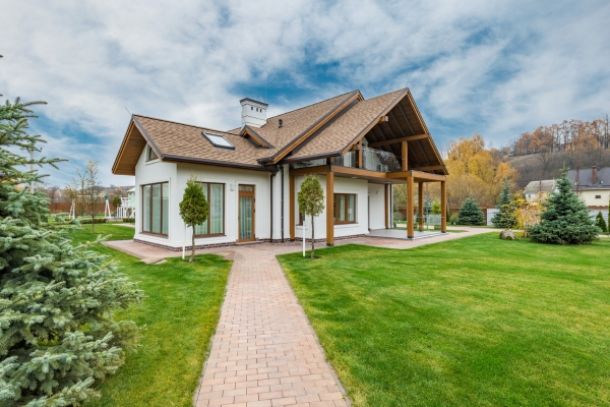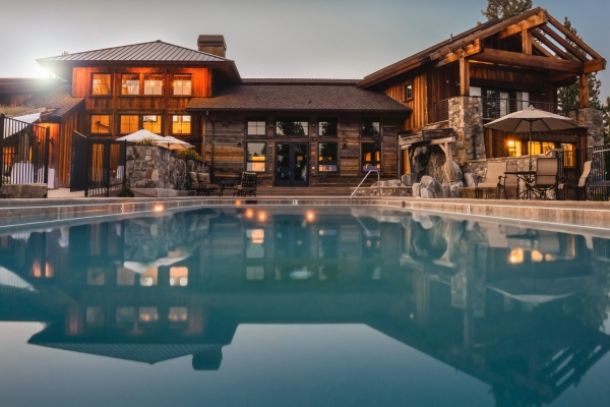A Step-by-Step DIY Guide for Wooden Houses
A Step-by-Step DIY Guide for Wooden Houses
Embarking on a DIY project to build a wooden house requires careful planning, step-by-step execution, and a willingness to learn. This guide provides a detailed walkthrough of the process, offering practical advice and actionable tips to help you construct a wooden house from the ground up. Each phase of the project is broken down into manageable steps to ensure that even beginners can confidently tackle the challenge.
Introduction
Building a wooden house on your own is a rewarding journey that combines craftsmanship with sustainable living. This step-by-step guide is designed to demystify the process, covering everything from site preparation to finishing touches. With each phase clearly explained, you’ll gain the confidence and skills needed to transform raw materials into a beautiful, functional home.
Step 1: Planning and Permits
a. Define Your Vision
Before you pick up any tools, it is essential to have a clear vision of your future home. Sketch your ideas, create a basic blueprint, and list the features you want to include. Think about room layout, overall size, and any special elements such as porches or lofts. A clear vision helps guide all subsequent decisions.
b. Budgeting and Financing
Establish a realistic budget that covers all aspects of the construction—from materials and labor (if applicable) to permits and unexpected costs. Research financing options if necessary, and consider setting aside a contingency fund for emergencies.
c. Permits and Regulations
Check with local authorities about building codes, zoning laws, and permits required for constructing a wooden house. Securing the proper permits at the start prevents legal issues later in the project. This step may involve submitting your plans for approval, so ensure they meet all local guidelines.
Step 2: Site Preparation and Foundation
a. Site Selection and Clearing
Choose a site that offers a stable foundation, good drainage, and easy access to utilities. Clear the land of debris, trees, and other obstacles. Proper site preparation ensures that your house will have a solid, level base.
b. Laying the Foundation
The foundation is the most critical structural element of your home. Depending on your location, you may opt for a concrete slab, pier and beam, or another foundation type. Excavate according to your design, set formwork, and pour the foundation with care. Allow adequate time for curing before moving on to framing.
Step 3: Framing the Wooden House
a. Structural Framework
With the foundation in place, begin constructing the frame of your wooden house. Use high-quality, treated lumber for the main structure to ensure durability and resistance to the elements. Start with the floor system, then proceed to erect the walls and roof framework.
b. Precision and Safety
Accurate measurements are key. Utilize tools like laser levels and measuring tapes to ensure each piece is cut and installed precisely. Safety gear such as gloves, goggles, and sturdy footwear is essential during this phase.
c. Openings and Supports
Plan and construct openings for doors and windows early in the framing process. Reinforce these areas with additional supports to maintain the integrity of the structure. This forethought prevents costly adjustments later.
Step 4: Insulation, Roofing, and Windows
a. Insulation Installation
Proper insulation is vital for energy efficiency. While wood offers natural insulation, supplement with materials such as fiberglass, foam, or eco-friendly alternatives like sheep’s wool. Installing insulation between studs and in the roof cavity helps regulate the indoor temperature.
b. Roofing Construction
Choose a roofing design that complements your wooden structure. A pitched roof is common for wooden houses due to its ability to shed water and snow. Install roofing materials carefully, ensuring a watertight seal. Options include wooden shingles, metal panels, or composite materials.
c. Windows and Doors
Install energy-efficient windows and doors that enhance natural lighting and ventilation. Ensure that all openings are properly sealed to prevent drafts and maintain energy efficiency. The right choice of windows and doors can significantly impact both aesthetics and performance.
Step 5: Interior and Exterior Finishing
a. Exterior Treatments
Treat the exterior of your wooden house with stains, sealants, or paints that protect the wood from weathering and pests. These treatments not only preserve the wood but also enhance its natural beauty.
b. Interior Design
Inside, focus on creating a space that reflects your personal style. Install flooring, cabinetry, and fixtures that complement the warm tones of the wood. Consider built-in solutions to maximize space efficiency and functionality.
c. Detailing and Personal Touches
Pay attention to smaller details such as trim work, lighting, and storage. These finishing touches transform a functional structure into a comfortable, livable home.
Step 6: Final Inspections and Maintenance
a. Quality Control
Before considering your project complete, conduct thorough inspections of both the structural elements and finishing touches. Check for any gaps, leaks, or misalignments. Rectify any issues promptly to ensure the longevity of your home.
b. Establishing a Maintenance Plan
A wooden house requires ongoing maintenance to stay in optimal condition. Set up a maintenance schedule for tasks such as resealing wood surfaces, cleaning gutters, and checking for pest infestations. Regular upkeep protects your investment and enhances the overall comfort of your home.
Conclusion
Constructing a wooden house through a DIY approach is a challenging yet immensely fulfilling project. By following this step-by-step guide, you can confidently navigate the complexities of planning, construction, and finishing. Each phase, from obtaining permits to adding personal touches, builds on the last to create a home that is both sustainable and uniquely yours. Embrace the journey, learn from every step, and soon you’ll be enjoying the warmth and charm of a house built with your own hands.


